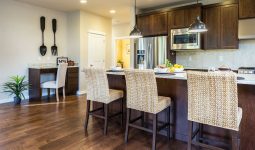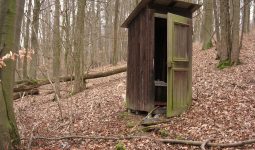There are different types of bamboo flooring. When you’re thinking about installing new flooring in your home, you’re probably considering the colors, textures, brands, and materials.
While these are crucial considerations when making a significant purchase, practically all flooring materials are.
Bamboo is available in various styles and forms. Hardwood flooring is not the same as bamboo flooring. Bamboo is a form of grass, not wood.
This means you can create different types of bamboo flooring by constructing the flooring in various ways.
Bamboo flooring is more adaptable, durable, and sturdy than most hardwood substitutes.
If you’re considering installing bamboo flooring, you should be aware of the several types available.
Our goal is that by the end of this post, you will understand the distinctions between the different types of bamboo flooring and feel well-informed enough to make an informed decision.
These are the different types of bamboo flooring available.
1. Solid-Horizontal
Horizontal bamboo is formed by drying big bamboo strips and cutting and slicing these larger pieces into smaller, thinner strips.
The thin strips are then glued together to form planks (you can see an illustration of this above). Pressure and heat are applied to the planks to ensure security.
Because bamboo is naturally lighter in color and shade, the strips are occasionally discolored, and some are carbonized.
While carbonized bamboo will have lower toughness than regular bamboo, it will aid in achieving a darker color if desired.
Furthermore, the traces of the bamboo nodes are typical on horizontal bamboo floors. This sort of bamboo floor will most closely resemble the appearance of bamboo in its natural state.
Solid horizontal bamboo floors may be an excellent choice for someone drawn to bamboo flooring because of its natural appearance. Who knows, their room may be less active.
Horizontal bamboo floors in the shade and hue that suit your room should be easy to find. While horizontal bamboo is more likely to be scratched, the extra benefit of being able to repair it may compensate.
2. Solid-Vertical
Before we go into the production process for vertical bamboo floors. It’s worth noting that this form of bamboo flooring resembles horizontal bamboo floors quite a bit.
This is because the first procedure of cutting more giant bamboo stalks into thinner strips is nearly identical.
The main distinction is that this bamboo flooring is made by gluing the strips vertically rather than stacking and gluing them horizontally, as the name implies.
Because of the vertical orientation, nodes common in horizontal bamboo flooring are almost non-existent in vertical bamboo.
Furthermore, Vertical bamboo floors are ideal for people who desire the freedom to refinish their floors and aren’t concerned with the floors resembling the grass from which they came.
Also, Vertical bamboo floors may function well in a place that requires a lighter touch and a form of bamboo flooring with a minimalist appeal. This is one of the different types of bamboo flooring.
3. Strand Woven
Strand woven bamboo is formed by grinding or shredding bamboo types to break out the fibers. Which is one of the more interesting techniques for producing bamboo floors.
Once the bamboo has been reduced to a pulp, it is often mixed with glue. As the name implies, the material is then weaved and pressed together under tremendous heat.
Furthermore, Strand woven bamboo is often constructed using the bamboo strips left behind after horizontal and vertical bamboo manufacture.
This feature may appeal to eco-conscious customers because it ensures that all portions of the bamboo stalk are utilized. Resulting in very little waste.
Furthermore, this manufacturing procedure produces a flooring product that is often tougher than other hardwood flooring solutions. Strand-woven bamboo is virtually always mentioned in writings about the hardness and durability of bamboo floors.
Furthermore, strand-woven bamboo floors offer many advantages in terms of durability, options, flexibility, and environmental friendliness.
This sort of bamboo flooring is ideal for customers who want the most flexible alternative while still enjoying the benefits of bamboo as a flooring material.
4. Engineered
Engineered bamboo floors contain the least quantity of bamboo of all the bamboo flooring options compared to other options.
A thin bamboo coating is glued to a thicker layer of mixed wood during production.
Furthermore, this procedure gives the top layer a bamboo feel while adding toughness to the base or foundational layer.
The top layer (the wear layer) is frequently constructed of woven bamboo.
Engineered bamboo floors provide a unique opportunity for anyone looking for a flooring choice that combines the benefits of bamboo with the added durability of a foundational layer.
Because of the thin layer, this bamboo flooring is not advised for people who plan to put their floors in high-traffic areas where they will be scratched.
While the wear layer of strand woven bamboo should aid with scratches, you will almost certainly scratch these floors with enough movement.
However, this form of bamboo flooring protects against humidity impacts compared to other options due to the mixed wood base layer.








